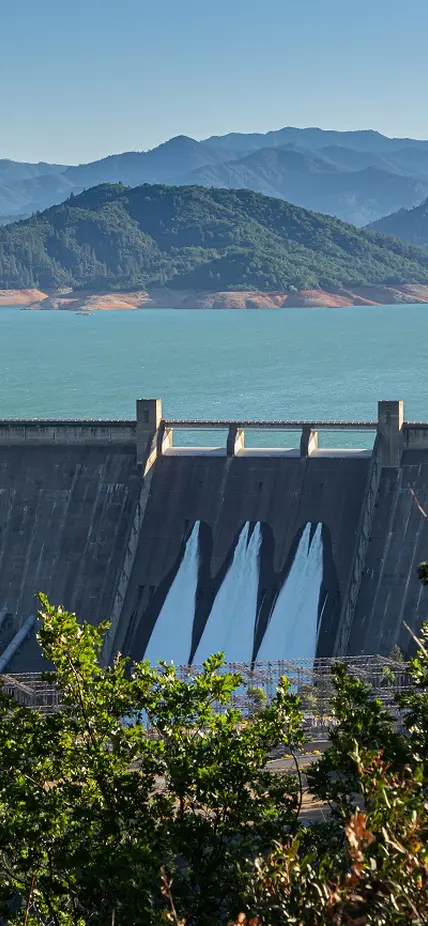Palo Alto, CA— Dams and reservoirs won’t be able to meet the demand for water in the coming decades, according to a recent Stanford University-led study from a team including Carnegie Science’s Lorenzo Rosa.
The researchers developed a first-of-its-kind global map of how agriculture and energy systems depend on stored water from dams and reservoirs—so-called gray infrastructure—to generate power and grow food. Their findings underscore the need to explore alternative options, including other renewable energy sources and sustainable water storage approaches.
“Water storage is a critical and globally limited resource,” said Stanford’s Rafael Schmitt, the lead author of the paper, which was recently published in Renewable and Sustainable Energy Reviews. “Our study shows that the solutions of the past are insufficient and can be damaging to already overstretched freshwater ecosystems.”
Dams and reservoirs fuel hydropower, store water for irrigation, provide drinking water, and lower flood risks. They also inflict ecological and societal damage by disrupting fish migrations and displacing people and terrestrial ecosystems, among other impacts.
To help policymakers make more informed decisions, Schmitt and Rosa used machine learning to quantify the roles of the world’s 6,000 largest dams and reservoirs, identifying crucial gaps in our understanding of how they contribute to food and energy security.
“We found that less than 5 percent of water from dams reaches crops for irrigation,” Rosa explained. “These dams do, however, provide 505 gigawatts of hydropower, representing 40 percent of current total global hydropower capacity.”
Looking ahead, about 3,700 dam projects have been identified worldwide for potential development. If all of them were built, they could provide about 60 percent more energy and about 40 percent more stored water for irrigation, according to Schmitt and Rosa’s work.
But even with the construction of several thousand new dams, there wouldn’t be nearly enough hydropower and stored irrigation water to meet energy and irrigation needs in India, central Europe, and several Asian-Pacific nations.
What’s more, Schmitt and Rosa predict that the global need for stored irrigation water will grow by about 70 percent between now and 2050, while the demand for hydropower will grow approximately 35 percent over the same period.
Policies that promote renewable energy technologies like wind and solar could enable these technologies to generate more power and allow a greater volume of water from dams and reservoirs to be used for irrigation.
If other renewable energy technologies such as wind and solar could take on a greater share of the energy demand, then a greater volume of water from dams and reservoirs could be used for irrigation. They found that existing gray infrastructure could supply more than 50 percent of the water needed to irrigate crops without depleting water stocks or causing environmental harm. However, Schmitt and Rosa caution against building new dams and urge land managers and policymakers to consider nature-based water storage strategies for sustainable irrigation.
“Because 40 percent of the world’s food production depends on irrigation, understanding the dual role of water storage for irrigation and energy is paramount,” Rosa concluded. “This study illuminates the path forward for sustainable development, emphasizing the critical synergy between water infrastructure, climate adaptation, and agricultural resilience.”
